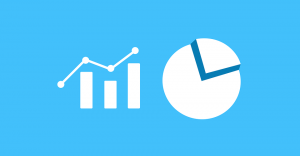Unless you’re an experienced and charismatic person, it’s very difficult to show confidence at a business presentation. It could cause your audience’s attention to wander and getting your point across could be challenging. People often don’t take classes on public speaking so it’s something that generally has to be learned as you go. So to help you out, we’ve put together seven tips that will help you be more confident during your business presentations.
Give your presentation a narrative
If your audience won’t understand your products very well then it’s important to give your presentation a narrative. This means structuring it much like a story with a beginning and end. This will help hook the attention of your audience and could also make it easier for you to give your presentation, but it’s important to plan this ahead of time.
[If you interact with the embedded video above and your browser is set to allow cookies, you agree for this 3rd party service to create and store local 3rd party cookies on your device.]
Understand your audience
It’s important to learn about your audience beforehand so that you can plan it accordingly. For instance, if you’re giving a presentation to industry professionals, then you can afford to use technical jargon. However, if you’re addressing consumers, then it’s best to structure your presentation to be easy to understand.
Don’t try to hide your nerves
The more you try to hide your nerves the more they will show. A great way to hide them is to use it as excitement instead of just being nervous. Rather than trying to calm yourself, use your nerves to get yourself excited for your performance so that you’re more persuasive when you address your audience.
Create images to use during your presentation

Any presentation should have slides to accompany it and it’s important to design these as early as possible so that you can refine them to fit the purposes they serve. If you need to use sets of data, then they should be clear and easy to understand such as coloured charts, graphs and other visual representations of data.
Rehearse your presentation
Every presentation should be rehearsed before you go up on the main stage. Don’t just write it up and read it back to yourself at home; raise your voice and pretend that you have an audience in front of you and speak to them as if they were physically there. Another alternative is to sign up to a professional course and learn how to deliver captivating presentations – we have a number of presentation training London courses available.
Remember your drink of water
Getting a dry mouth during a long presentation is not fun, so make sure you bring up a glass or bottle of water and sip at it throughout the presentation when the opportunity presents itself. For example, if you’re showing a video clip then you may have a few seconds to take a drink of water to keep your mouth from drying up.
Realise that the audience is rooting for you
People often don’t realise that as soon as you get up on the stage, the audience is actually rooting for you. They’re here because they want to know what you have to offer them. They want you to succeed and wow them with your presentation and they’re listening to you because you’re the expert.
Below, we’ve included an informative presentation where you can study some advanced presentation skills.

